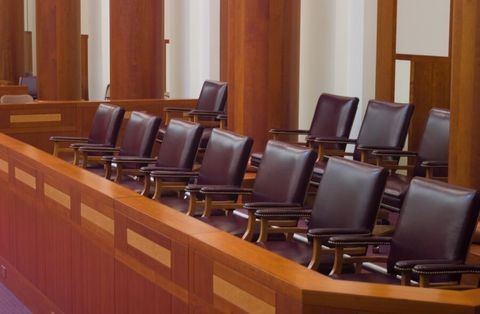Insurance Institute for Highway Safety Publishes Report on Autonomous Vehicle Testing
Client Alert | 3 min read | 08.17.18
An August 7, 2018 report published by the Insurance Institute for Highway Safety (IIHS) entitled “Reality Check” reviews existing technology involving partial automation, including some of its limitations. As the report makes clear, new vehicles with driver assistance technology can help drivers in performing certain tasks, but they cannot drive themselves, and continue to require the involvement of human drivers.
Autonomous Vehicle Testing Results
The IIHS conducts on-road and track tests to develop a consumer ratings program for passenger vehicles. Recently, IIHS tested advanced driver assistance systems, and evaluated some of these systems in vehicles under different driving conditions.
One of the advanced driver assistance systems tested was adaptive cruise control (ACC) which is designed to maintain a set speed and following distance from the vehicle in front. “ACC systems require drivers to pay attention to what the vehicle is doing at all times and be ready to brake manually,” stated one of IIHS’s senior research engineers. Out on the road, there were instances where the vehicles failed to respond to stopped vehicles ahead of them, and would have hit them without driver intervention.
Active lane-keeping, a steering system designed to center the vehicle within clearly marked lanes, also experienced instances in which driver intervention was required, especially on curves or hills. When drivers intervened to avoid an incident, the active lane-keeping system disengaged, and only resumed when the driver re-engaged the Autopilot.
Based upon a scale developed by SAE International, an automotive industry association, with level zero being no autonomy to level five representing full autonomy, the combination of ACC and active lane-keeping is considered level two. Level two vehicles can assist with steering, speed control and following distance, but a human driver is still in charge and must remain alert. The report shows that the present technology isn’t yet able to handle speed control or lane departure on its own in all traffic situations or road conditions. The report also describes the need for safeguards to protect other vehicles, bicycles, and pedestrians that share the road with autonomous or semi-autonomous cars.
The report did note that combined driver assistance avoidance features on at least one vehicle are reducing third-party property damage and bodily injury claims.
Regulation of Autonomous Vehicles
Currently, only a handful of state laws and voluntary federal guidelines oversee the testing and eventual deployment of autonomous vehicles in the U.S. Although the National Highway Traffic Safety Administration (NHTSA) has issued some policy guidelines, it hasn’t attempted to regulate self-driving vehicles.
Legislation which would set limits for the development, testing, and deployment of autonomous vehicles has been stalled in Congress. An industry coalition of auto manufacturers, parts suppliers, tech firms and others are urging swift passage of the legislation to avoid impeding innovation involving autonomous vehicles in the U.S.
The IIHS, which in the past developed tests that forced automakers to strengthen vehicle structures, will eventually make recommendations for fully autonomous cars. In the meantime, IIHS is encouraging regulators to require companies to make public information about every crash involving automation technology, including any disengagement of autonomous driving systems, which occurs during testing on public roads.
IIHS also has stated that requiring event data recorders would help to determine whether the vehicle or human driver was in control, and the actions each may have taken prior to the incident. Additionally, IIHS is also strongly advising NHTSA to create and maintain a nationwide public database of vehicles with (and without) automated driving systems that is indexed as well as searchable by vehicle VIN numbers. Another IIHS recommendation is that autonomous vehicles be programmed to take themselves out of service when the status of critical vehicle systems cannot support a safe trip.
Conclusion
The IIHS report and recommendations underscore that the balance between automation and driver intervention in operating vehicles with autonomous systems is a critical issue in safe performance under certain road conditions. As the IIHS notes, one of the factors considered by engineers in developing advanced driver assistance systems is how much of the driving task can be safely turned over to technology without drivers completely “checking out.” There is an inherent trade-off with automated assistance: if the technology is limited in order to keep drivers engaged, it may seem too rudimentary; but if it appears too capable, drivers may not give the attention required to ensure safety.
These dilemmas also underscore the potential for claims alleging negligence (by the human driver) and design defect, warranty, or other breach (by the automobile, component or systems manufacturer)—and the difficult questions in assigning responsibility—that are presented in an accident involving the combination of a human driver and an automated system in a vehicle.
To read the IIHS’s full report, click here.
Insights
Client Alert | 3 min read | 04.23.24
DOJ Promises NPAs to Certain Individuals Through New Voluntary Self-Disclosure Pilot Program
On April 15, 2024, the Acting Assistant Attorney General for the Criminal Division of the Department of Justice (“DOJ”) Nicole Argentieri announced a new Pilot Program on Voluntary Self-Disclosure for Individuals (“Pilot Program” or “Program”). The Pilot Program offers a clear path for voluntary self-disclosure by certain corporate executives and other individuals who are themselves involved in misconduct by corporations, in exchange for a Non-Prosecution Agreement (“NPA”). The Pilot Program specifically targets individuals who disclose to the Criminal Division at DOJ in Washington, D.C. information about certain corporate criminal conduct. By carving out a clear path to non-prosecution for those who qualify, DOJ has created another tool to uncover complex crimes that might not otherwise be reported to the Department.
Client Alert | 3 min read | 04.23.24
Client Alert | 5 min read | 04.23.24
Client Alert | 6 min read | 04.23.24





